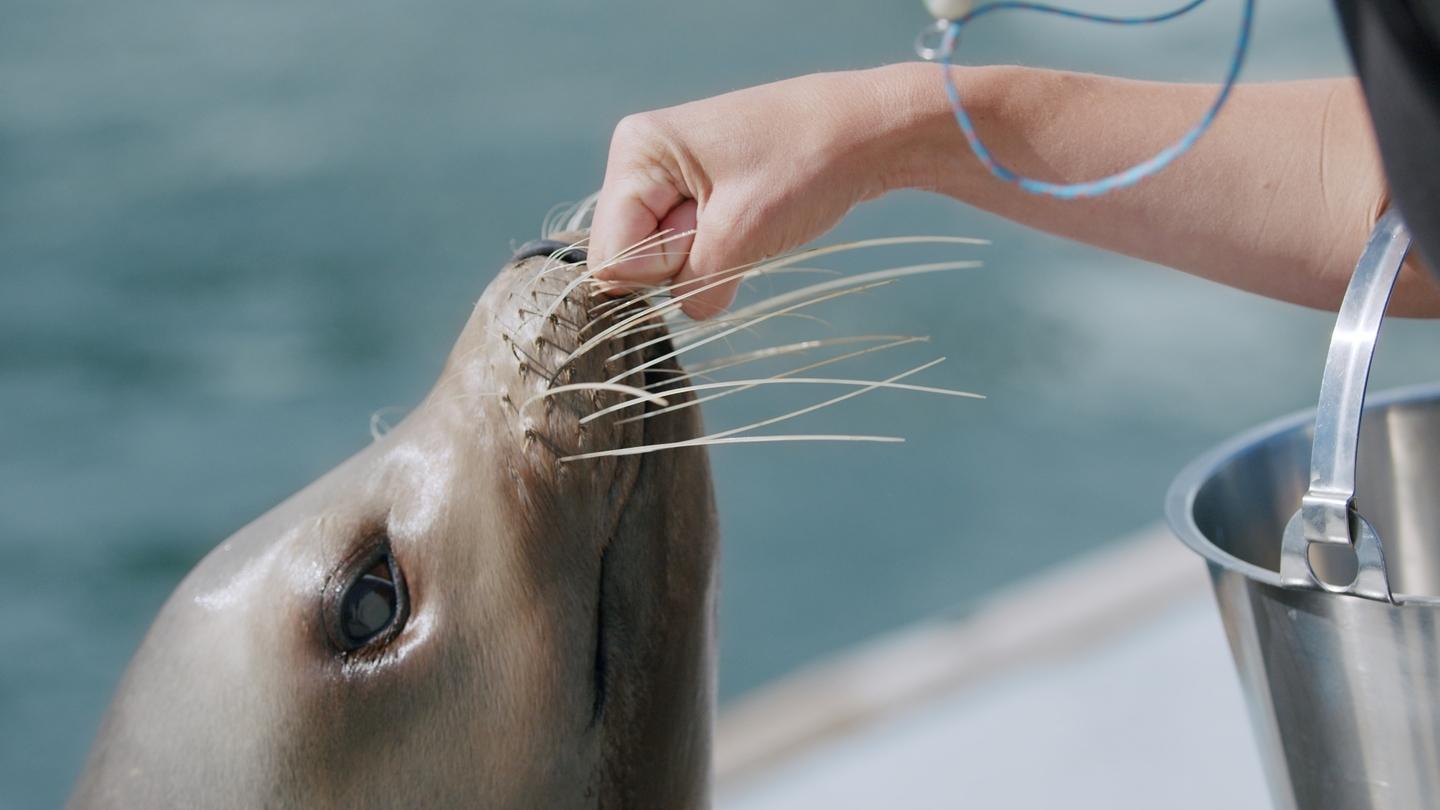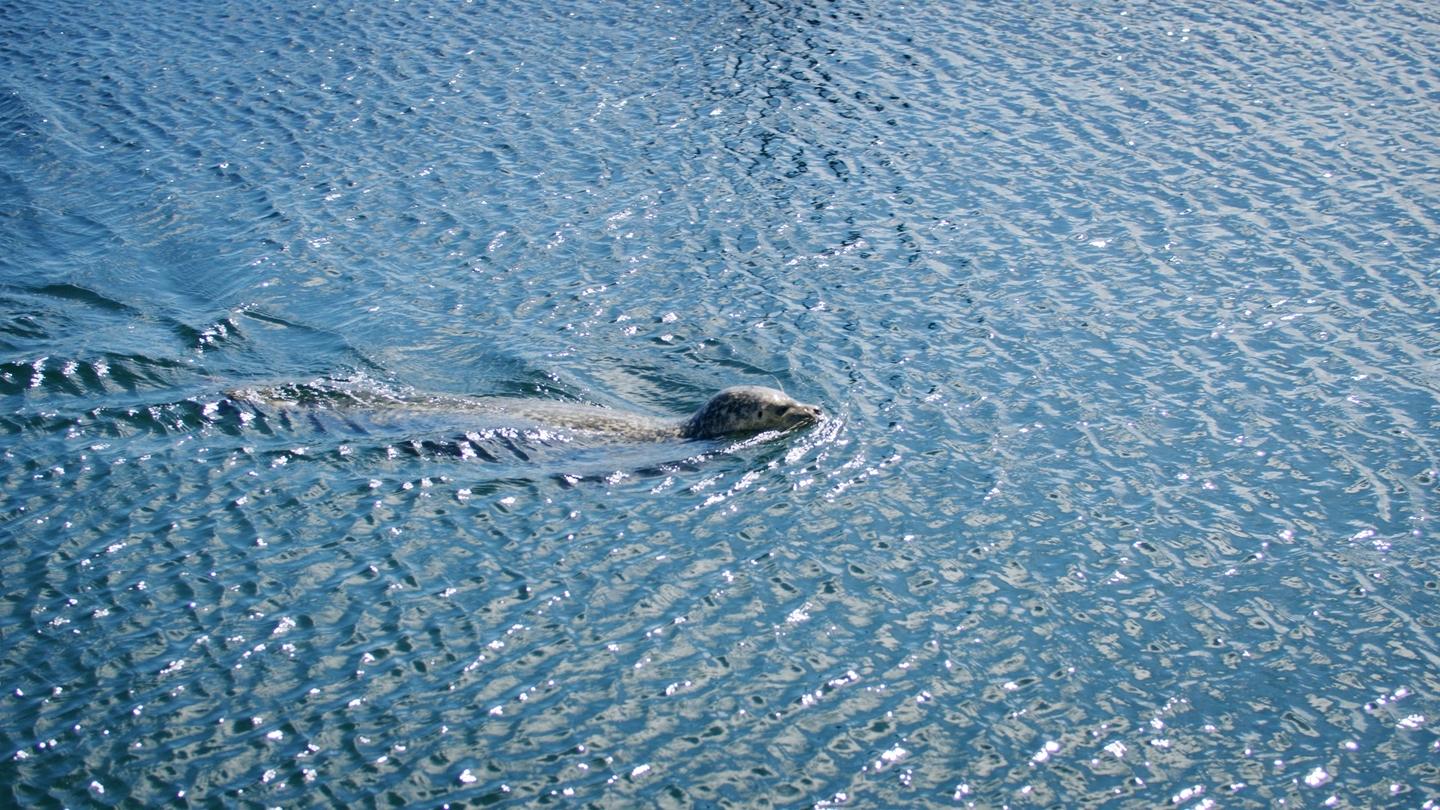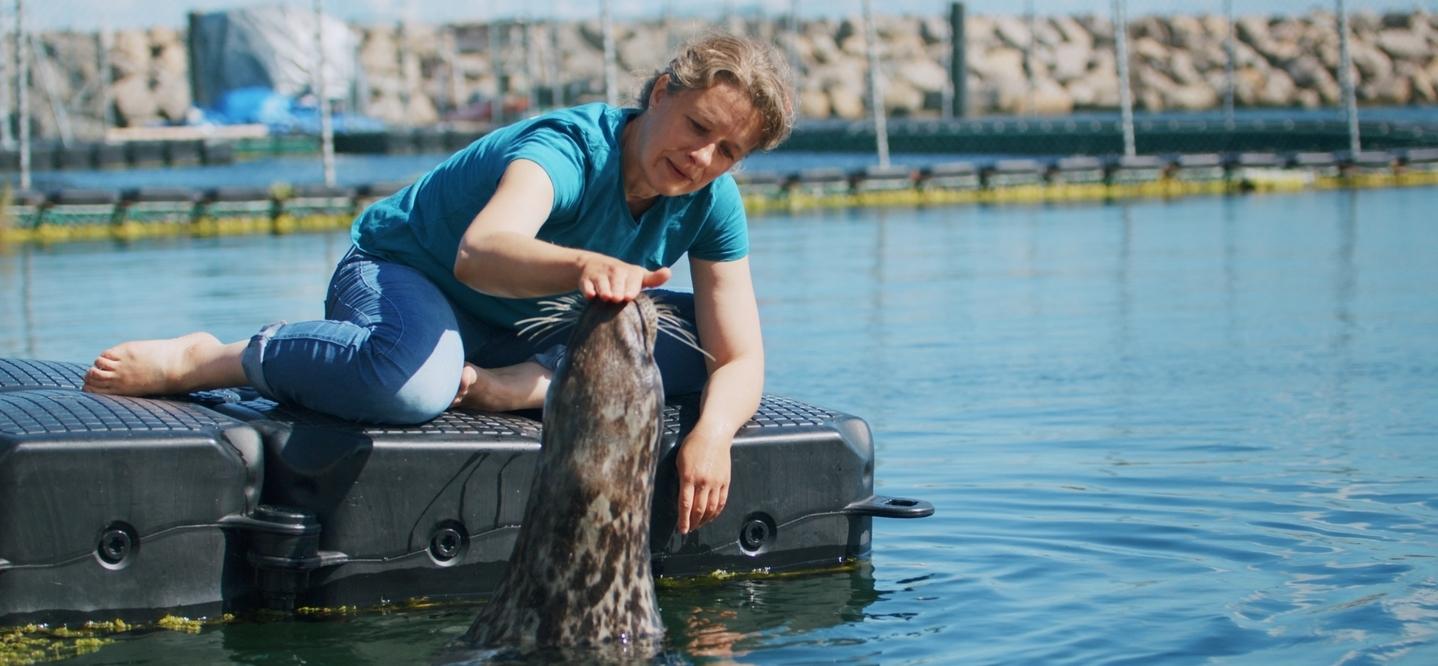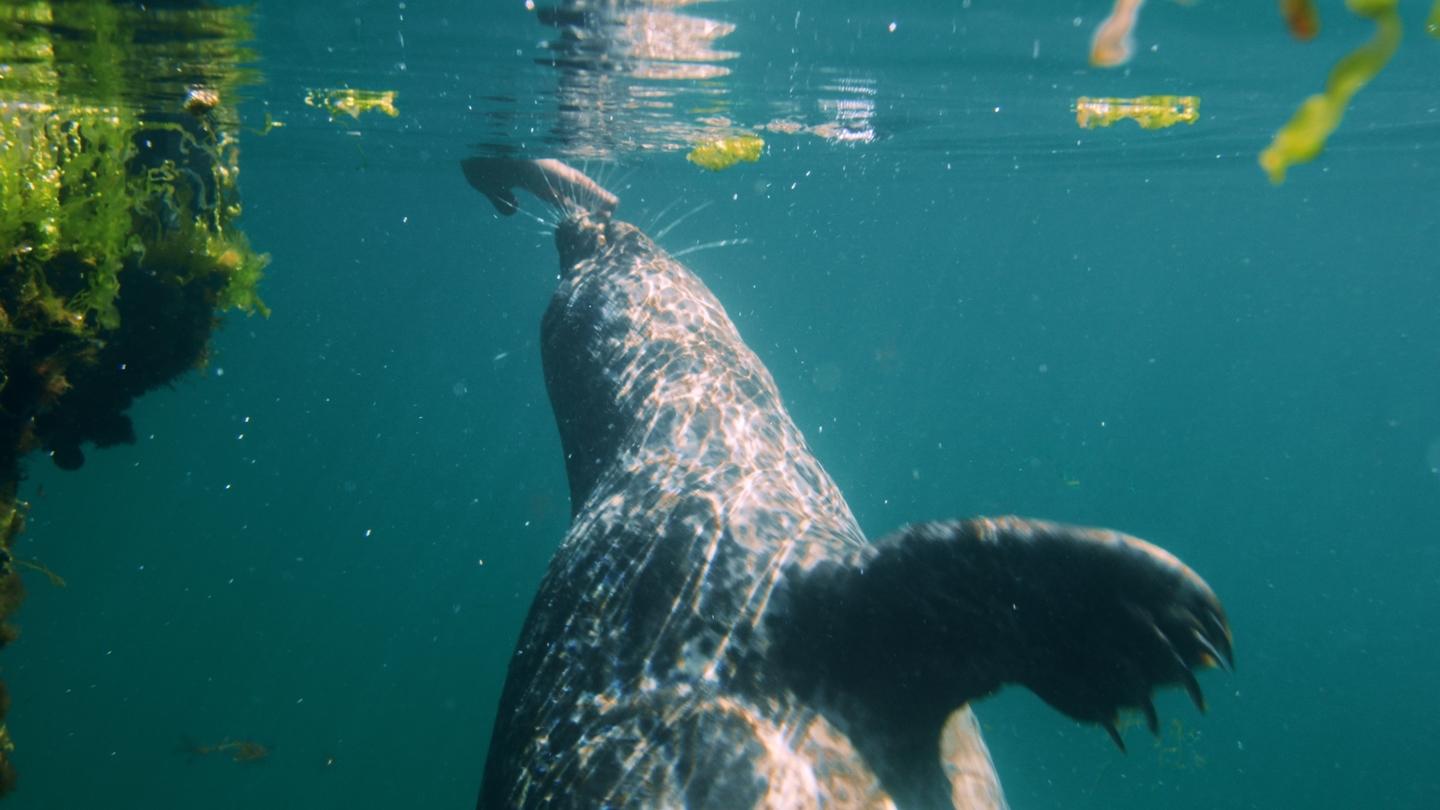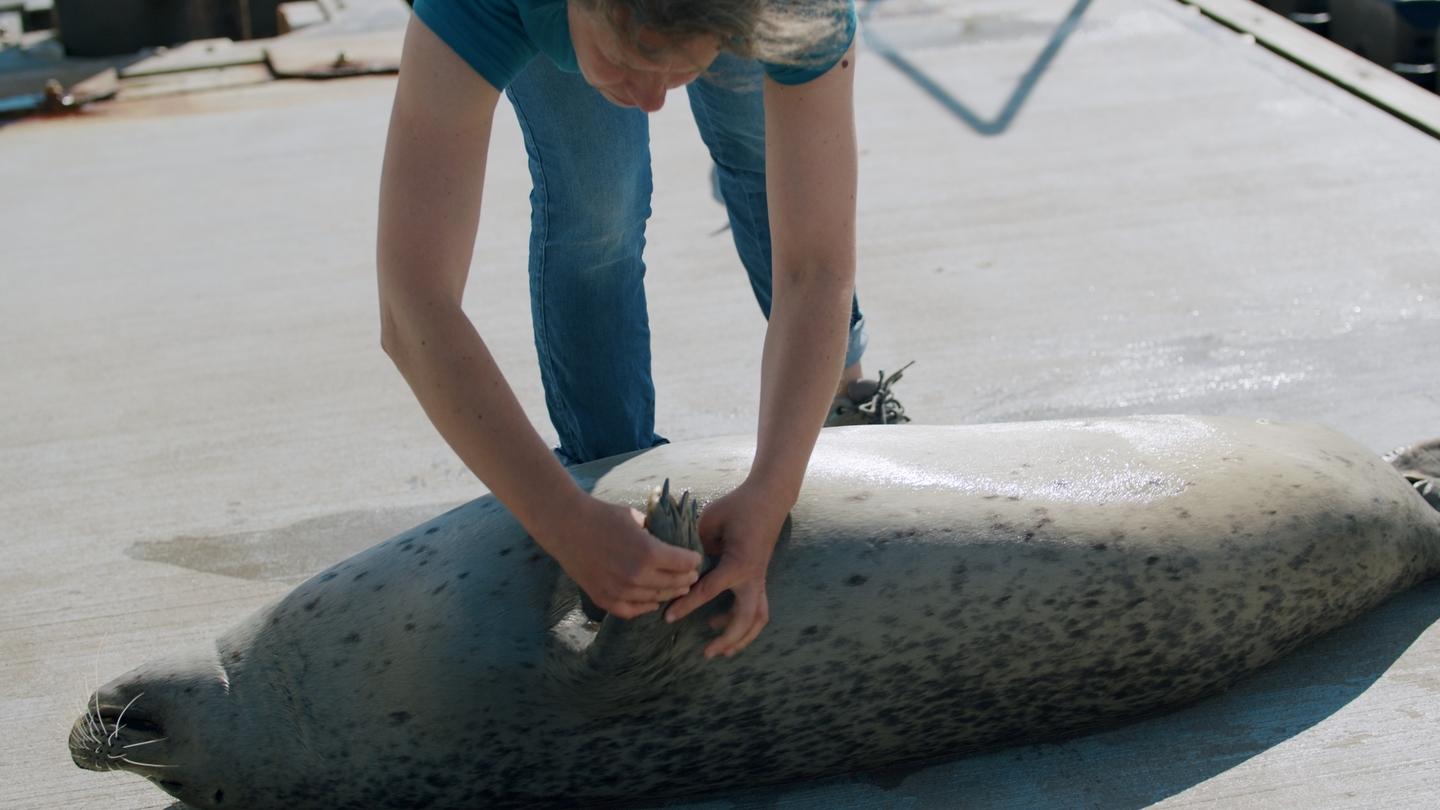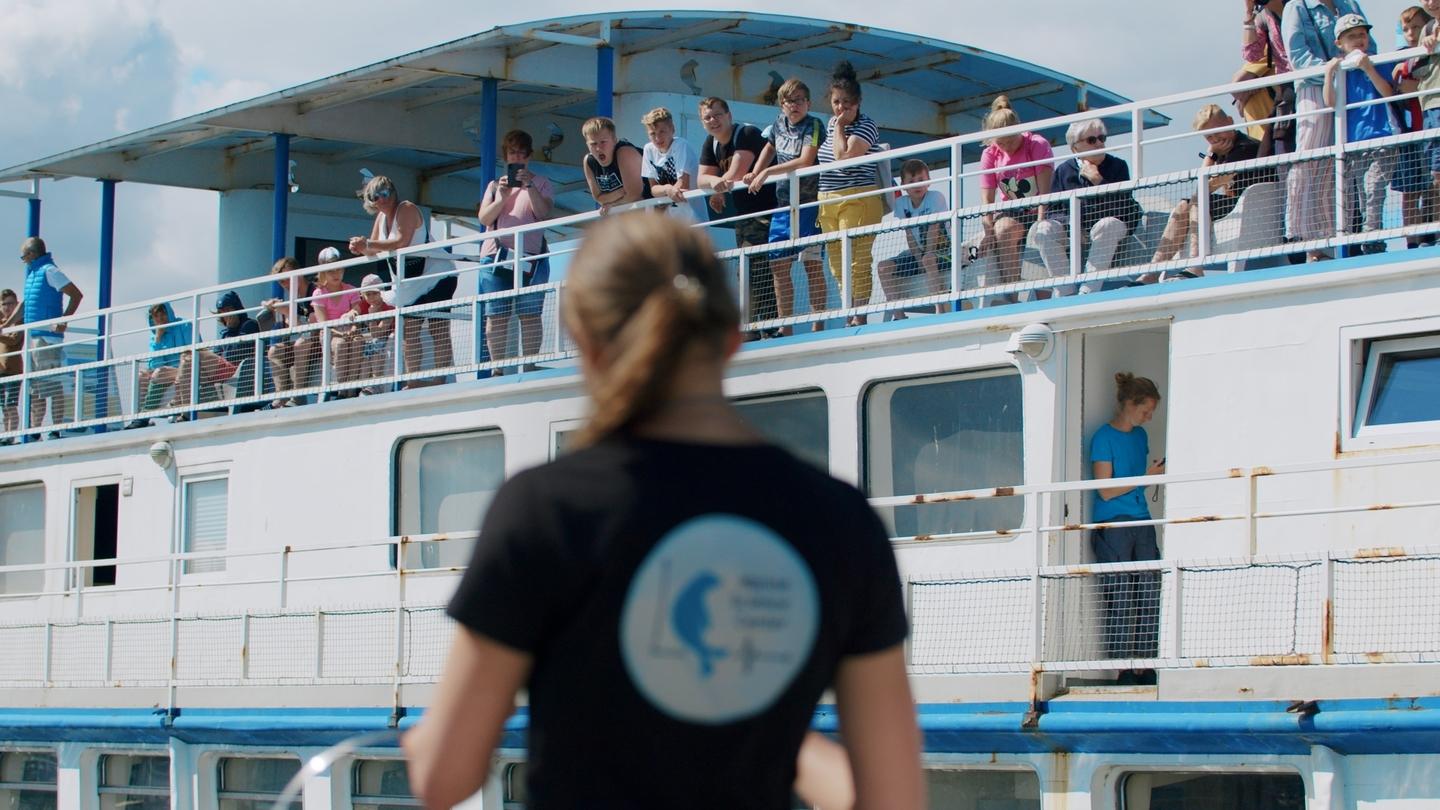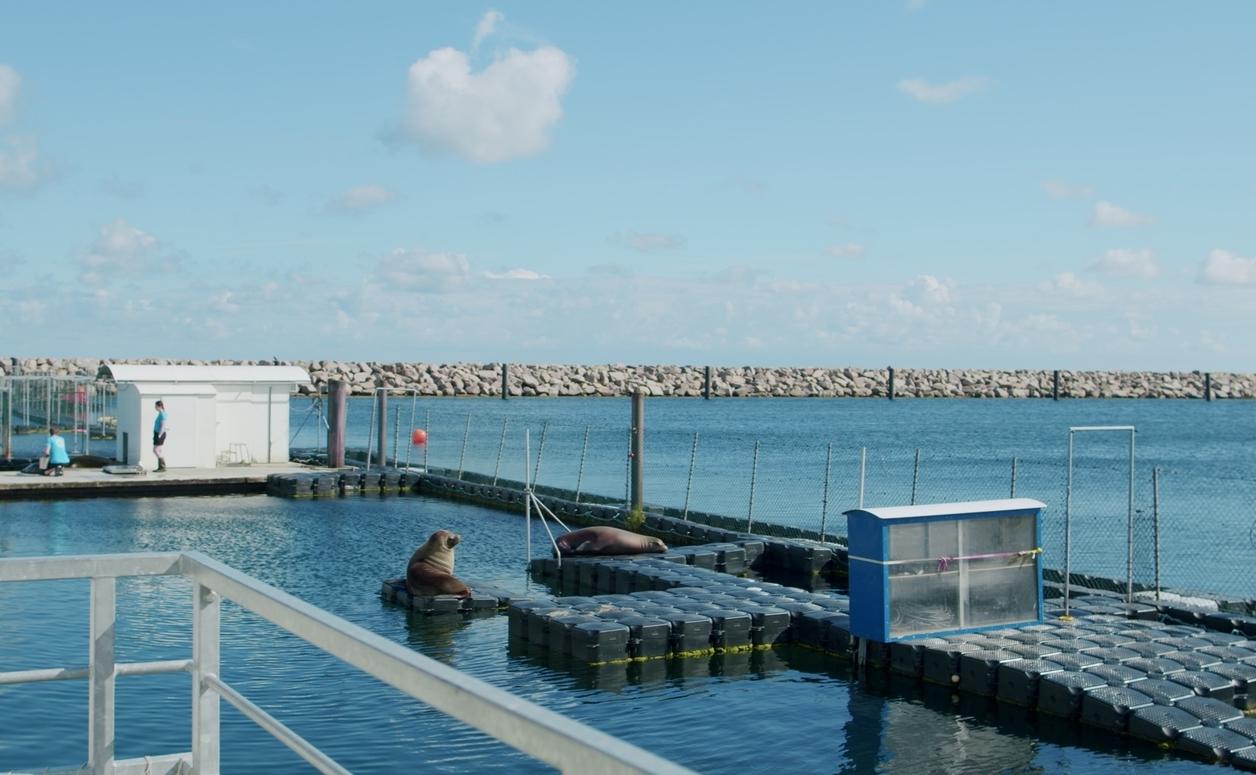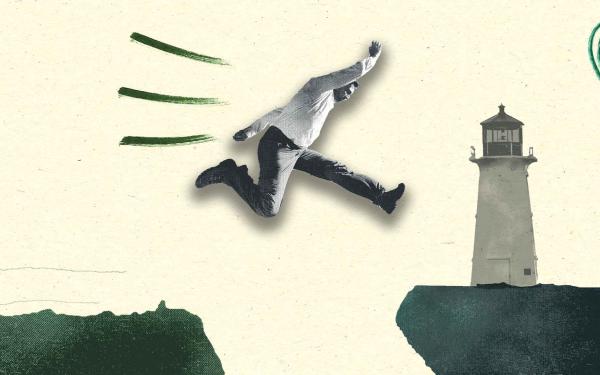Behavioral biology - The secret of the seals
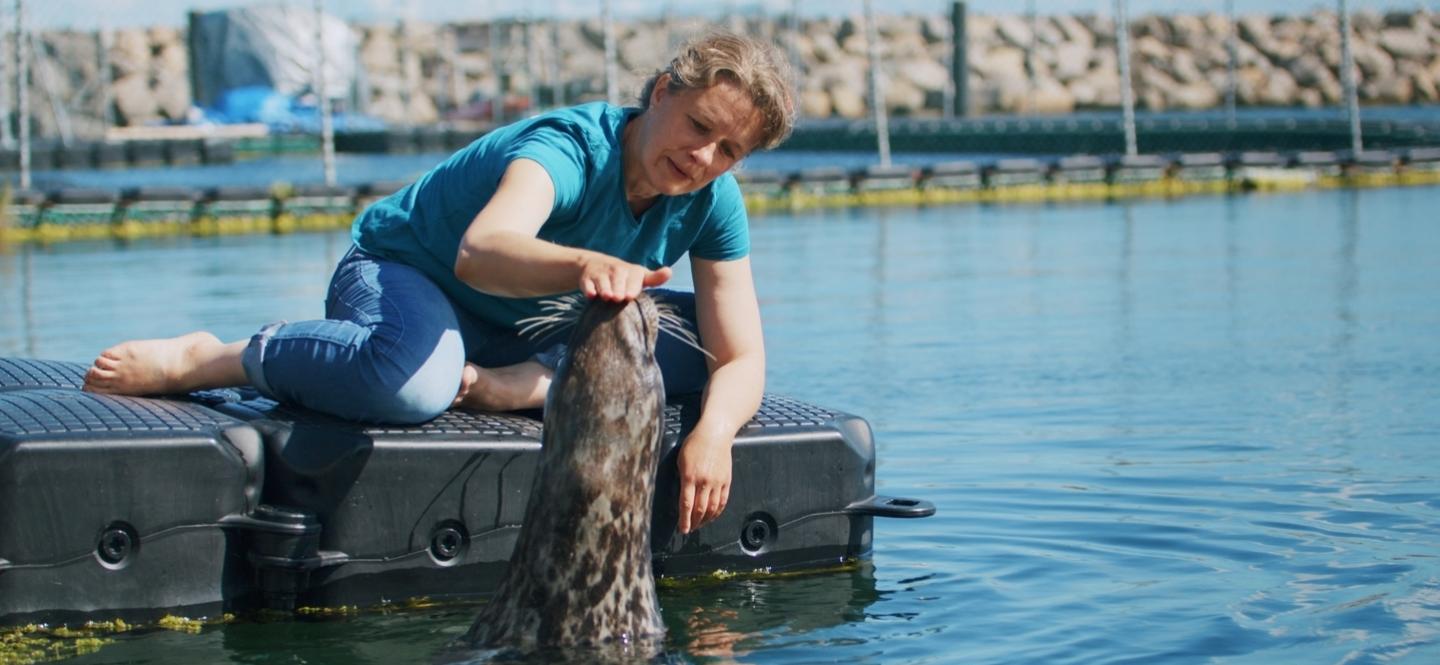
Element K für VolkswagenStiftung
Marine mammals are fascinating creatures. Their visual system in particular, and how it contributes to underwater orientation, for example, is still a mystery. Frederike Hanke from the University of Rostock wants to change that.
Frederike Hanke has always had a special relationship with animals. "I grew up in a rural area and there was a field for pigs very close to my parents' house. I often spent hours there as a little girl watching the animals searching for food or rolling around in the mud." She was particularly fascinated by creatures that were quite different from the usual pets, but which she nevertheless tried to keep as if they were. She marked her vineyard snails with colored dots to make them easier to find again because they were constantly escaping. Grasshoppers were lured into terrariums with much effort. "My mother recently told me that she always thought I would one day spend my time sitting in the jungle watching monkeys."

Element K für VolkswagenStiftung
In the video portrait, Frederike Hanke gives an insight into her work in the seal research center "Hohe Düne" of the Marine Science Center of the University of Rostock.
Things turned out a little differently. But only a bit. Instead of the rainforest, Frederike Hanke, a professor at the Institute of Biosciences at the University of Rostock, was drawn to another fascinating habitat: the sea. And instead of observing and researching apes that are perfectly adapted to their jungle environment, she now studies creatures capable of coping in two completely different habitats in a most impressive way: Seals that switch effortlessly between land and water.
Seals are really extremely exciting animals!
15 such amphibious animals playfully cavort around in a 100-by-30-meter facility at Hanke's workplace in the marina of Rostock-Hohe Düne, the University of Rostock's Marine Science Center. They go by names like Filou, Luca, Bill, Henry or Marco, consume large quantities of fish and are the main protagonists in all sorts of experiments that Hanke and her team come up with. "Seals are really extremely exciting animals," enthuses Hanke, who has been conducting research at the Marine Science Center since 2008 and was awarded a Lichtenberg Professorship by the Volkswagen Foundation in 2019. She works there with various seal species, including harbor seals, which form the largest group with twelve animals, as well as two California sea lions and a South African fur seal. The biologist is interested in how the animals' visual system functions underwater and is used especially for orientation – but also how the sensory systems work together to provide the animals with a holistic picture of their environment.

Frederike Hanke and her team work with various seal species, including harbor seals, which form the largest group with twelve animals, as well as two California sea lions and a South African fur seal.
How do seals see?
Hanke first became interested in the animals during a field trip to the Cologne Zoo. That was while she was still studying biology in Freiburg. There she became acquainted with the research of Guido Dehnhardt, who at that time was working in Cologne on the sensory and cognitive abilities of seals. "We had the opportunity to get to know the animals up close. This sparked an intense interest in wanting to find out more about them," Hanke recalls. "They are just so very different – from us humans, of course, but also from the animals we usually have to deal with. It immediately occurred to me that the enormous degree of freedom that seals have under water, twisting and turning in all directions, that must lead to a completely different kind of perception."
The interest in working with seals did not abate. Hanke completed a short internship in Cologne and, still a student in Freiburg, asked if she could do her diploma thesis on these fascinating creatures. She could, and it was Guido Dehnhardt who suggested a research topic that has remained her main focus to this day: the seal's eye. "I was so lucky, because the visual system of animals had never really been researched systematically until then. There were studies here and there, of course. But you never got the feeling that researchers really wanted to understand in detail what exactly happens when marine mammals process visual stimuli," Hanke says. So basically, it is the perfect starting point for a young researcher: a field that has been relatively understudied so far, in which – with a lot of work and a bit of luck – many exciting and surprising things can be discovered.
I was so lucky, because the visual system of animals had never really been researched systematically until then.
Always provided there actually is something to discover in the first place – for there were reasons why for a long time no one was really interested in the eyes of marine mammals such as seals, as Frederike Hanke explains: "People were convinced that the visual system could not really play any major role for these animals. After all, conditions very often prevail underwater that are not at all suitable for good vision. It's often dark or murky." But the researcher found it hard to believe that. "I always thought it was wrong to say that one sensory system is more important than another. If seals have eyes, they're going to use them."
Optic flow
Her persistence and scientific curiosity led the researcher on a promising track. As early as 2014, there was speculation at the Marine Science Center that seals might actually use their visual system to a much greater extent for underwater orientation than had previously been assumed. Excitingly, the idea emerging at the time was that the particles apparently responsible for impairing visibility might actually help them to orient. Responsible for this is the so-called optic flow, the pattern of movement that occurs, for example, in the eye of the seal as it moves through its environment. Optic flow is used by many creatures, even insects, to orient themselves in space. "Imagine riding your bike through the forest. Then the trees and bushes appear to move past you," she explains. From this movement pattern, the brain then determines, for example, in which direction we are moving, how far away objects are from us or when we are in danger of colliding with an object.
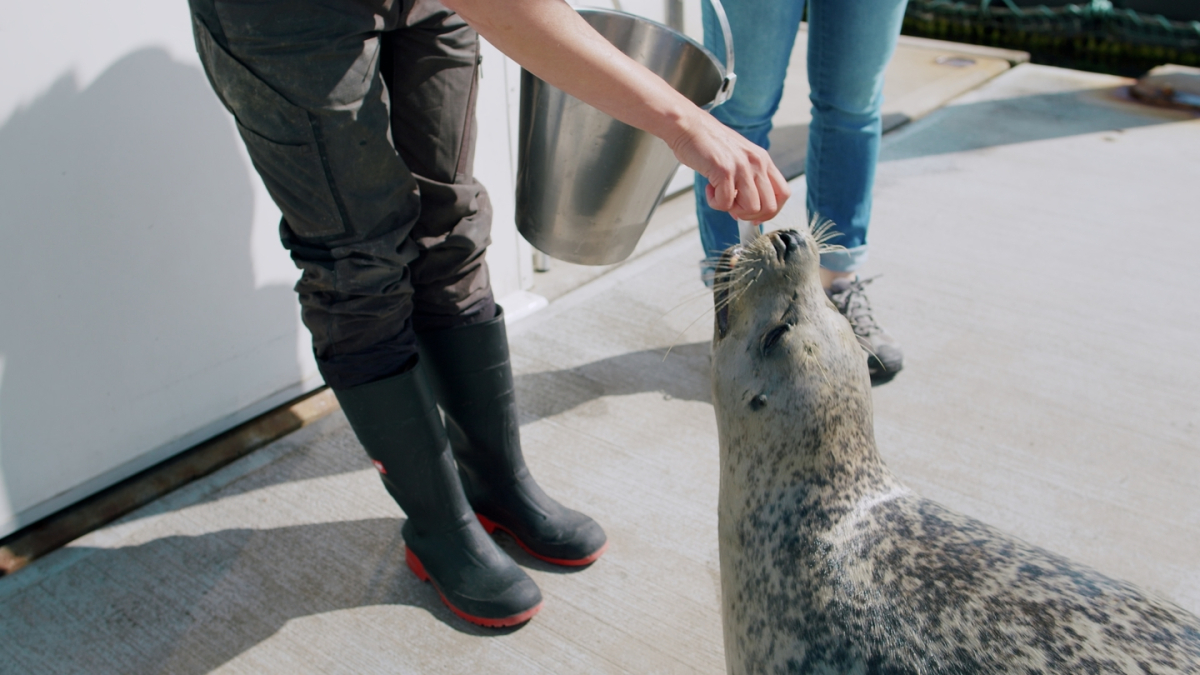
The seals get fish during training.
When swimming in turbid water, seals are very likely to experience optic flow. The particles passing by as they move could provide the animals with constant feedback, for example, about the speed and direction at which they are moving. At least, that's what a behavioral experiment suggests. On an underwater screen, a cloud of moving dots was projected, simulating a forward movement of a seal through a cloud of particles. "It was quite striking to see how the animal was literally drawn into the projection," Hanke said.
Right now, for example, it's still relatively unclear to us how marine mammals orient themselves in the open ocean.
For Hanke, this opens up an exciting new field of research, ranging from optic phenomena such as optic flow to visual orientation – and even visual neuroanatomy. "Right now, for example, it's still relatively unclear to us how marine mammals orient themselves in the open ocean. For example, how they manage to return to their haul-out places in such a targeted way after they've been out hunting for food."
Inspire for research
With the help of the Lichtenberg Professorship funding available to her until 2024, the researcher intends to pursue her hypotheses further. Soon, optic flow stimuli will be presented on an 82-inch monitor integrated in an underwater housing, which will be able to display particle clouds even more precisely and over a larger area, the researcher hopes. In fact, the device should already be in use, but Corona caused delays. "To make such a large screen suitable for underwater use is rather special and unique in the world. Together with protective housing, the whole thing will end up weighing a ton," the researcher explains.
Another large piece of equipment is also to be soon in use: an MRI tube provided by Siemens, but without measuring unit. In this way, Hanke wants to take her research one step further, so to speak, and move from the description of the sensory system in the periphery to where the stimuli ultimately arrive and are processed: in the brain of the living being. "I find it fascinating to imagine what goes on in the brain of a marine mammal when it moves underwater," Hanke reports. The biologist does not have any concrete application scenarios for her research in mind. "Of course, our research could be exciting for the control of underwater robots, for example. But I see myself more as a basic researcher. My goal is to understand: How does the eye work? How does visual perception work?"
All experiments at the Marine Science Center, which opened in 2008, are conducted and evaluated on the "Lichtenberg," a converted river cruise ship. "The ship is now about 70 years old and was already sailing on the Spree River in Berlin during the GDR era. It was even used for a spectacular escape attempt," Hanke speaks respectfully of her workplace.
For its present use, the 53-meter-long ship was completely gutted and before being equipped with offices, workshops, laboratories and storage. From the sundeck, visitors, including many school classes, can watch the researchers and the seals at work. "This public relations work is important to us," Hanke explains. "I think we have a mission as researchers not only to present results at the end, but also to show the process of how we got there." It is primarily the fascination with the animals that draws visitors to them, Hanke says. Rather like herself. "It's always been curiosity about the other, the unknown, that drives me."
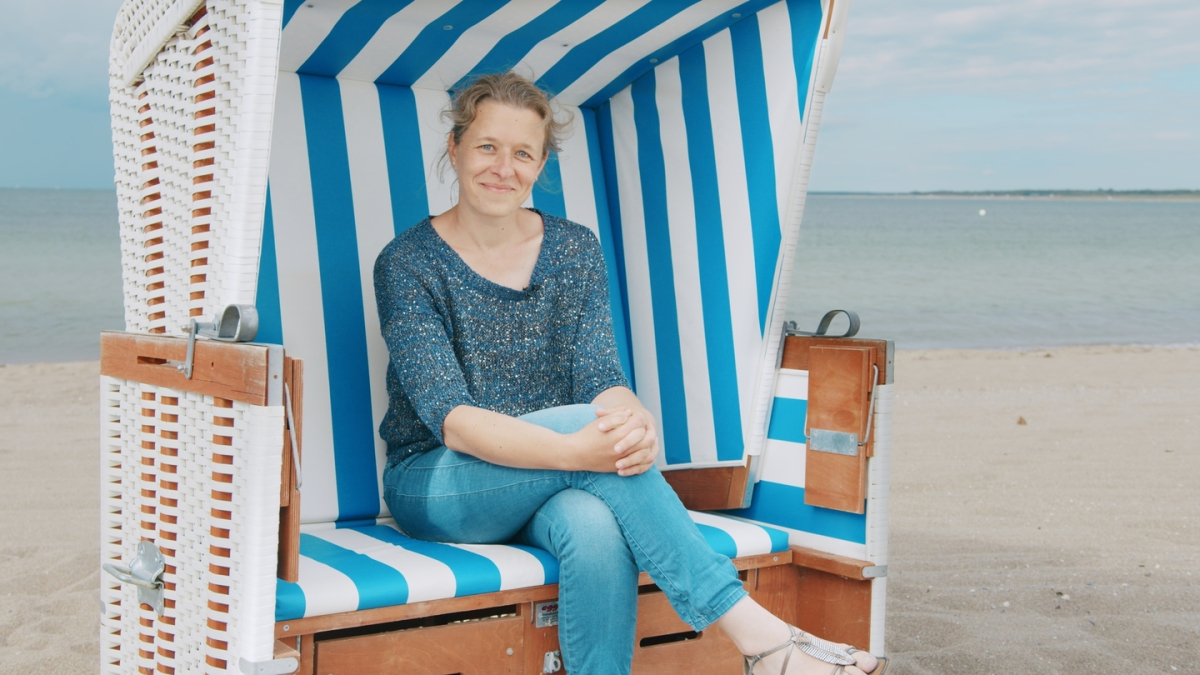
Frederike Hanke's enthusiasm for marine mammals began while she was studying biology.

